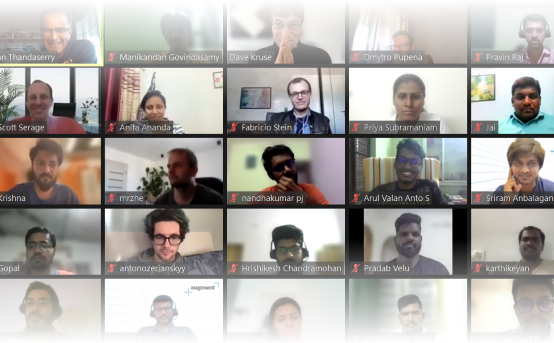Huge Corporations Find Great Value in Offshoring Software Development, Should You?
Many large U.S. companies use offshoring for software development. Is this something that you and your company should also consider doing?
Many large U.S. companies use offshoring for a large portion of their software development work. Is this something that you and your company should also consider doing? To answer this question, let’s first look at some numbers.
- According to Gartner, the worldwide spending on IT outsourcing in 2013 was about $325 billion.
- Two in five CIOs plan to outsource some or all of their web and mobile development to an external partner.
- Manufacturing leads the way when it comes to outsourcing with about 53% of the pie followed closely by IT at 43%.
- The median annual wage for applications developers was $90,060 in May 2012.
Needless to say, these are some interesting numbers. But often, if you are involved in the business of software, you already have an opinion about outsourcing. Many times the opinions are negative: It’s cheap. Quality is bad. Partners are unreliable. Communication is a challenge. There is some truth in some or all of these concerns.
Before we address those concerns, let’s look at some more numbers:
- According to the U.S. Department of Labor’s Bureau of Labor Statistics, employment of software developers is projected to grow 22% from 2012 to 2022, much faster than the average for all occupations. Growth for application developers is projected at 23% and for systems developers it’s 20%.
- According to CompTIA, a non-profit association for the IT industry, 8 in 10 organizations say their business operations are impacted by gaps in the skill sets of their IT staff.
The main reason for the rapid growth is a large increase in the demand for computer software. Mobile technology requires new applications. The healthcare industry is greatly increasing its use of computer systems and applications. Also, concerns over threats to computer security could result in more investment in security software to protect computer networks and electronic infrastructure.
The constant demand for a large pool of software developers is real. Look at the job boards; talk with recruiters and managers of software divisions. All of them will agree that the need for good software developers is constant. The ever evolving technology tools are another challenge. New tools, new frameworks and new architecture all contribute to finding qualified talent.
A few more numbers:
- By most estimates a third of IBM’s 400,000 workforce is in India.
- Accenture (a U.S.-based company) has strength in India at over 90,000, which is more than double that of its workforce in the U.S.
- French IT major Capgemini has over 44,000 of its 125,000 employees in India; its staff strength in India grew by 50% in just the past 2.5 years.
- Computer Sciences Corporation has 24,000 of its 98,000 employees in India.
- Microsoft’s largest development center outside of Redmond, Washington is located in Hyderabad, India. Microsoft India largely focuses on strategic and IP software product development.
The above examples are only a small sample of large multi-national companies taking advantage of the large pool of technical skills available in India. There are numerous other small, medium and large companies doing much the same. The fact that all of the above companies are successfully running their Indian operations is a testament to the fact that, if done right, outsourcing is indeed a viable option.
In my experience, the biggest advantage to be had from the tech talent available in India is scalability. While cost can be a driving factor, no other country can scale up like India can. The numerous engineering colleges in India churn out something like half a million engineers every single year. It’s true many of them are not employable straight out of the campus, but the numbers that are employable are rather significant. Most of them are sufficiently comfortable with English which puts them at a significant advantage over other countries.
Successfully augmenting your IT/software team with an offshore team can be a challenge. The keys to making it work for you are a workable process that identifies and negates risks, a reliable offshoring partner, acceptance from your onshore team and a proper understanding of the strengths of both the offshore and onshore teams.
Augmenting or building an offshore team is not just for large companies. Yes, there are many advantages that come with large budgets and name recognition. But the sheer number of tech skills available in India can make it work for any size company. As per data from Evans Data Corp., India will overtake the U.S. on the number of developers by 2017. Today, the U.S. leads the world in software developers with about 3.6 million followed closely by India at 2.75 million. By 2018, India will have a dramatic increase to 5.2 million as opposed to 4.5 million in the U.S. The large growth rate in India is attributed to its population (currently 1.2 billion), and its relative youth, with about half the population under age 25.
At Augment, with our development centers in South India, we believe we are positioned well to take advantage of this trend. We are currently helping companies ranging from small 4 – 10 person companies to 400 – 500 person firms. The key is to work with the right partner who understands your needs and customizes a plan and process that will leverage the skills available onshore and offshore.






